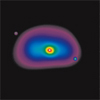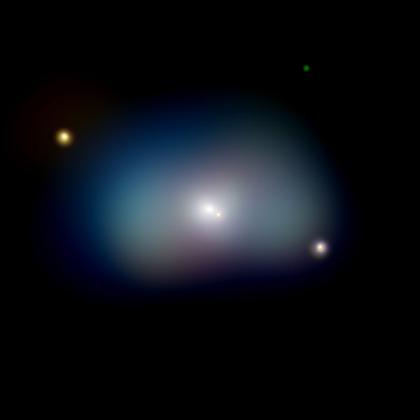Giant X-Ray Disk Sheds Light On Galactic Merger
The Chandra image of the elliptical galaxy NGC 1700 shows a flattened oval of multi-million degree gas, supporting the idea that it is the result of a merger of two smaller galaxies about 3 billion years ago. To the lower right, another version of the Chandra image shows only the low-energy X-rays and reveals a giant inner disk. This disk of 6-million degree gas appears light blue in the multicolor image above.
The disk is 90,000 light years in diameter - roughly two-thirds the diameter of the Milky Way Galaxy - making it the largest disk of hot gas known. Analysis of the structure of the disk shows that it is rotating and appears to be cooling. The existence of a large, rotating disk of hot gas suggests that NGC 1700 was created by the merger of a rotating spiral galaxy and an elliptical galaxy containing hot gas.
|
||||||||||||||||||||||||||





